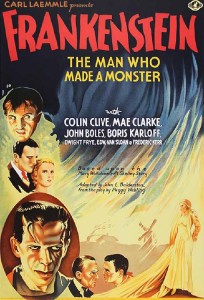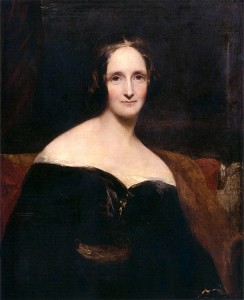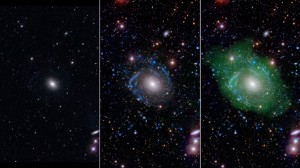Frankenstein 200
Wednesday, February 28th, 2018February 28, 2018
In 1818, 200 years ago, the world was introduced to the horror and moral quandaries of the classic novel Frankenstein. The full title of the famous book, written by the English author Mary Wollstonecraft Shelley, is Frankenstein, or the Modern Prometheus. It tells the story of Victor Frankenstein, a scientist who tries to create a living being for the good of humanity but instead produces a monster. Frankenstein is a Gothic novel, a type of fiction that includes mysterious and supernatural events intended to frighten the reader. The book is also an early example of science fiction. A lasting best seller, the book inspired numerous motion pictures, including the 1931 classic Frankenstein starring Boris Karloff as the unnamed monster.

Frankenstein, the famous horror novel by Mary Wollstonecraft Shelley, was published 200 years ago in 1818. The novel has been adapted into many motion pictures, including the famous 1931 film starring Boris Karloff. Credit: © Barson Collection, Getty Images
Frankenstein creates his monster by assembling parts of dead bodies and activating the creature with electricity. The monster, which has no name in the book, is actually a gentle, intelligent creature. But everyone fears and mistreats him because of his hideous appearance. Frankenstein himself rejects the monster and refuses to create a mate for him. The monster’s terrible loneliness drives him to seek revenge by murdering Frankenstein’s wife, brother, and best friend. Frankenstein dies while trying to find and kill the monster, who disappears into the Arctic at the end of the novel.

Mary Wollstonecraft Shelley was the wife of the English poet Percy Bysshe Shelley and author of the famous horror novel Frankenstein (1818). Credit: © GL Archive/Alamy Images
Mary Shelley’s Frankenstein emerged from a scary story competition held among bright British literary talents in the summer of 1816. At a villa on Lake Geneva in Switzerland, the poet Lord Byron hosted a small group of friends that included poet Percy Bysshe Shelley and his girlfriend, Mary Godwin (Wollstonecraft Shelley’s maiden name). The child of literary parents, 18-year-old Mary came up with the idea for a “hideous phantasm of a man” created in a laboratory. She then wrote the story and developed it into a novel. At that time, scientists were learning how to harness and use electricity, and attempts were made to reanimate human corpses through electric currents and shocks. The attempts failed, of course—all but Victor Frankenstein’s.
Frankenstein was published anonymously in a limited three-volume edition (only 500 copies) in January 1818. An immediate sensation, the book was quickly re-released as a two-volume set. The book’s second edition in 1823 included the author’s name, Mary Shelley. That same year, a stage version of the story, Presumption; or, The Fate of Frankenstein, debuted in London (in the playbill, the character of the monster was listed as “——”). A revised single-volume edition of the book, the most common version seen today, appeared in 1831.
The original 1818 edition of Frankenstein was reissued in 2018, and the Frankenstein Bicentennial Project at Arizona State University published an edition of the original text “annotated for scientists, engineers, and creators of all kinds.” Stanford University in California is hosting “Frankenstein@200″ in 2018, a series of academic courses and programs that will examine the “numerous moral, scientific, sociological, ethical, and spiritual dimensions” of Frankenstein. A number of essays and books have been released on Frankenstein‘s 200th anniversary, including new biographies of Mary Shelley and explorations of the moral questions surrounding the creation of artificial life.
Many horror films have been based on the character of Frankenstein’s monster. Most of them have little to do with the serious themes of the novel. These themes include the possible dangers involved in scientific experimentation with life and the suffering caused by judging people by their appearance. Aside from the classic 1931 film, notable movie versions include The Bride of Frankenstein (1935), Frankenstein Meets the Wolf Man (1943), Abbott and Costello Meet Frankenstein (1948), and Young Frankenstein (1974). Mary Shelley’s Frankenstein (1994) is the version most faithful to the book.



